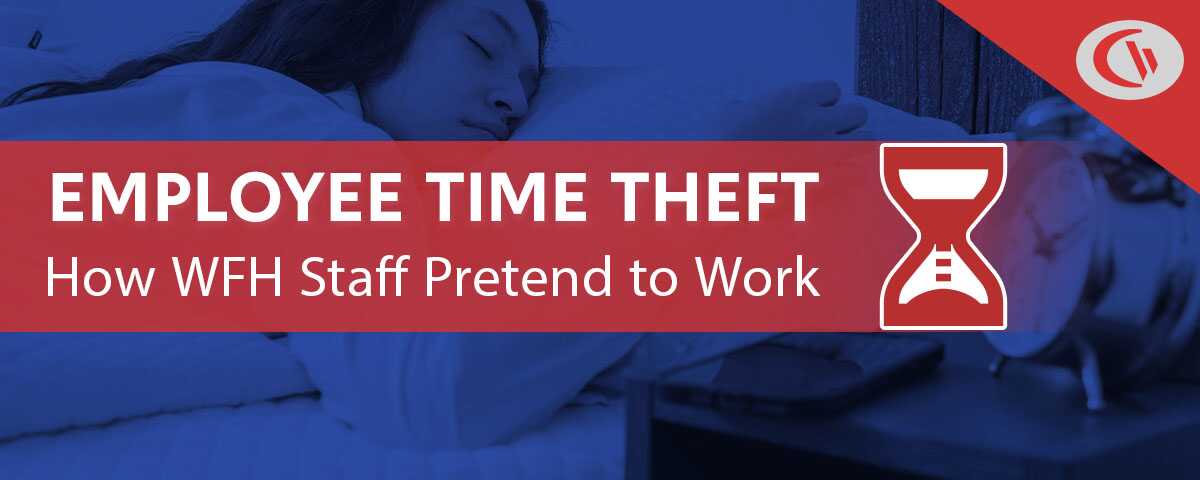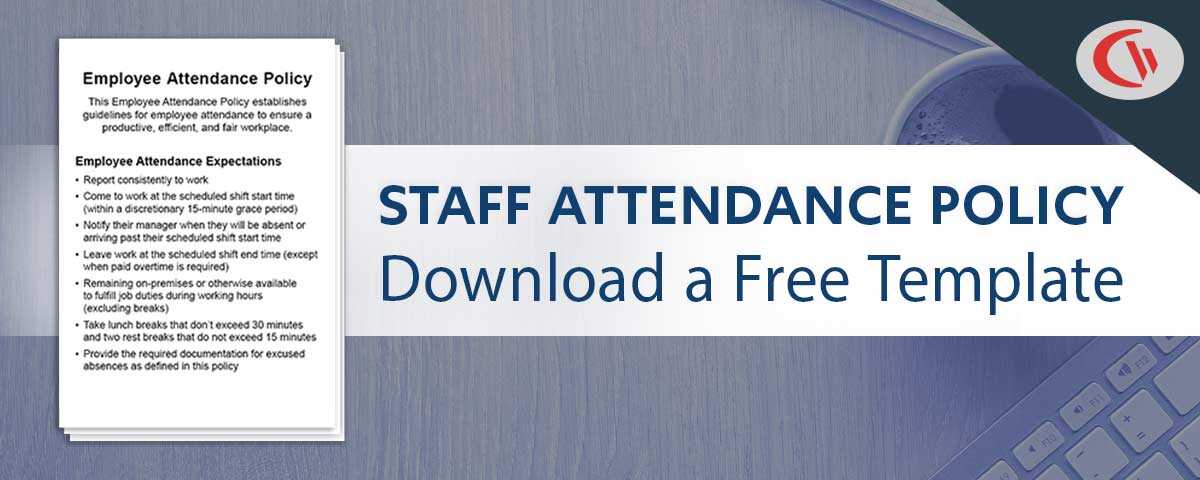How to Tell If Employees Are Working From Home—Or Just Pretending To

There have been a lot of growing pains when it comes to managing a remote workforce during COVID-19. The sudden lack of visibility has made it difficult for some managers to understand how productive employees are while working from home.
A staggering 38% of managers in a Harvard Business Review study felt that working remotely makes employees less productive. On the other hand, a Global Workplace Analytics survey of employees that were forced to work from home during COVID-19 has found that 68% of them feel that they are very successful working from home.
So, are remote employees truly more productive than their in-office counterparts? Or are they simply pretending to be busy at work? Let’s take a look.
Are Remote Workers Slacking Off?
One concern about the productivity of remote workers is that they will pretend to go to work every day while secretly spending time on personal projects, writing messages to their friends, looking for other jobs, doing household chores, taking naps, running errands, and other personal priorities.
On one hand, the research indicates that employees are happier and more productive while working from home. On the other, there has been no shortage of those taking advantage of the lack of visibility to eschew hard work in favor of distractions.
- 57% of WFH employees admitted to binge-watching TV during work hours (Fast Company, 2020)
- 61.6% admit that social media is a huge distraction while working at home. (SellCell, 2020)
- 43.2% admit to visiting porn and adult websites on their company computer during work hours. (SellCell)
- 33.5% admit to gaming while on the clock. (SellCell)
Naturally, these counterproductive work behaviors have led to an erosion of trust between employees and managers. While in-office employees are just as guilty of slacking off (we’ll touch on that later), it’s no surprise that the adoption of remote employee monitoring software has skyrocketed during the pandemic—employers need to know that their equipment and time is truly being used in the best interest of the company!
Improve Employee Productivity With
CurrentWare’s Remote Employee Monitoring Software
Ready to get advanced insights into how your employees spend their time? Reach out to the CurrentWare team for a demo of BrowseReporter, CurrentWare’s employee and computer monitoring software.
- Improve Productivity
Track unproductive web browsing and idle time to detect time-wasting - Save Time With Intuitive Reports
User-friendly reports make it easy to understand employee computer activity - Enhance Visibility
See how employees spend their time—even on Terminal Server and Remote Desktop Services!
How Employees Look Busy Working from Home
Using Mouse Jigglers to Appear Active
To ensure that remote employees are working during agreed-upon work hours companies will use idle time monitoring software or monitor user activity bubbles in team chat apps to see when employees are actively using their mouse or keyboard.
So, how are these remote employees looking busy while working from home? They’re deploying tools that input fake mouse or keyboard inputs.
A mouse jiggler—also known as a mouse mover—is a hardware or software tool that generates mouse movements. These tools come in many forms, including custom scripts, dedicated dongles, and even DIY solutions such as leaving an optical mouse running on top of a computer fan or even on top of a smartphone playing videos with repeating line patterns.
Appearing Busy With Fake Meetings
Another way that people have faked being active while working from home is by running a Microsoft Teams meeting with themselves so that they are flagged as being in a meeting, all the while they’re spending time away from their desk.
Web Surfing in Incognito/Private Browsing Modes
If an employee is suspected of putting off their jobs in favor of browsing the web an employer may decide to review their internet browsing history for evidence of wrong-doing.
Unfortunately, without a dedicated internet monitoring tool an employee can hide their past browsing history by using private browsing modes such as Incognito Mode on Google Chrome, Private Browsing on Mozilla Firefox, and InPrivate Browsing Window on Internet Explorer.
With a dedicated monitoring tool supervisors will have access to employee browsing history even if the employee uses private browsing or deletes their browsing history.
Scheduling Messages & Emails
To give the impression that they are starting work early and ending late employees will schedule messages to be automatically sent at predetermined times, regardless of when they are actually at their desk. This method gives off the impression that they are active and writing messages in real-time.
Being Highly Responsive to Messages
To help sell the illusion of productivity a remote worker can be dutifully responsive to every email, phone call, and team chat message—all the while doing whatever they desire.
Even if no work is getting done, there is no shortage of activities a remote worker can do to keep themselves entertained while they sit at their desk. By being present at their desks they can spend the day playing browser-based games, web surfing, or watching Netflix.
That’s not even mentioning the fact that with cell phone apps they don’t even need to be at their desk for this to work!
How Employees With an Office Job Pretend to Do Work
While the above tactics also apply to employees with an office job, there are a few methods that are uniquely suited for pretending to work in an office space where one’s boss can see their screen.
Disguise Reddit as Something Else
While Reddit isn’t inherently unproductive, it’s no secret that it’s an easy way to kill a few hours. To help make what’s on their screen more inconspicuous to their supervisor, employees can visit websites that make Reddit look like common office tools.
One example is MsOutlookit which makes Reddit look like an older version of Microsoft Outlook
Pretending to Work With Fake Code
Hacker Typer is a quaint little tool that makes programmers look like they’re working hard… to non-programmers, at least. With this tool they can type whatever they want and it will make code appear on their screen.
It’s not all mindless code, either; they can upload their own text file that will slowly generate as they type, allowing them to produce code that makes sense in the context of their work.
Sorry, Can’t Work—Windows is Updating!
For busy IT pros, waiting for software to finish installing can be one of the few moments of relief they get—apparently they may even get to eat lunch!
The responsibilities of an IT pro can be insurmountable, with more work coming in than their team can reasonably handle. This stress may tempt some to use FakeUpdate.net to give the impression that their computer is updating.
Why Do Employees Pretend to Do Work?
Company Culture
Most people want to succeed in their careers and provide value to their employer, which means they generally work hard while at work.
Unfortunately, in some company cultures genuine effort may be perceived as slacking off. This causes micromanagers to emphasize time spent looking busy at a desk over the actual output of their employees.
Under these circumstances, employees are incentivized to pretend to be busy by spending every hour of their work day in meetings, typing away at their desk, and other stuff that’s not necessarily contributing to their value in the workplace.
Misusing Work Monitoring Tools
The adoption of remote employee monitoring software has skyrocketed during the pandemic. CurrentWare alone saw a 130% increase in queries for our computer monitoring software during Q1/Q2 2020.
For many businesses, these tools have been essential for understanding how their remote employees spend their time during work hours. Beyond deterring time theft the data provided has made it easier to understand key work habits such as core working hours, software adoption rates, and adherence to company security policies.
Unfortunately without a thought-out strategy for monitoring employees, many businesses have allowed managers to misuse employee monitoring systems to micromanage how their employees work.
Rather than using the data to make informed management decisions, some managers have subjected their remote workers to scrutiny over minor deviations in their perceived productivity.
Examples include
- Reprimanding employees for taking brief breaks to browse the web, despite research showing it to increase productivity (so long as non-work internet browsing does not consume more than 12% of an employee’s work time.)
- Placing too strong of an emphasis on input, rather than output.
- Micromanaging any time spent away from the computer including bathroom breaks and work-adjacent tasks
This misuse of monitoring software is the result of managers emphasizing “butts-in-seats” as a KPI. This method of management hasn’t worked favorably for anyone in an office job, let alone for those working from home.
Stress and Burnout
One reason that employees avoid work is that there’s simply too much of it. With the average person only being productive for three hours of the day, being assigned greater hours and a larger workload isn’t suddenly going to make them more productive.
With remote work further eroding the concept of work/life balance, many feel pressured to answer messages and shift their focus to work-related tasks well outside of standard work hours. While this can be great when coupled with flexible work schedules, it’s also potentially a fast road to burnout.
Chronic burnout leads to a slew of problems including counterproductive work behaviors, decreased workplace satisfaction, and poor mental health.
In a similar sense, if someone finishes their job early, and they are rewarded with more work to do, they become incentivized to never finish their work early. This leads to goldbricking, a phenomenon where someone intentionally does less work than they are capable of.
How to Motivate Employees to Work Productively
There is a thin line between how to motivate employees to work productively and compelling them to simply look busy. This section will outline ways that managers can motivate their employees.
Use Monitoring Software Responsibly
FREE GUIDE & CHECKLIST
How to Keep Data Safe When Offboarding Employees
The employee offboarding process presents significant data security risks. Employees have intimate access to corporate data, insider knowledge of the organization’s systems, and a level of trust that can allow them to steal data undetected.
Click the button below to learn the best practices for managing insider threat risks during offboarding & gain access to a checklist of key cybersecurity items you must include in your offboarding process.
Monitor Remote & In-Office Employees Equally
Work monitoring software is an excellent tool for gaining insights into how time is spent during the work day. However, when misused these tools can exacerbate existing problems within the organization’s culture.
For example, if there is an inherent bias towards remote workers their employers may monitor their efforts more closely than they would their in-office counterparts. This makes what is supposed to be a business intelligence tool into morale-damaging “bossware”.
Instead, employers should monitor everybody equally and use the data to make informed management decisions for their entire workforce.
Avoid Using the Data to Micromanage
Avoid using the time that employees spend away from their computers or browsing the web as a standalone productivity metric.
While anomalously large amounts of time spent away from the computer or browsing the web can be a sign of a disengaged employee, a few minutes here and there shouldn’t be a concern.
In the case of idle time, they could be participating in work-adjacent tasks such as phone calls, deep thinking, or even grabbing a quick cup of coffee to help them stay alert and focused.
While you may think that web surfing is an issue, research from Brent Coker of the University of Melbourne has found this perspective to be wrong in some cases. According to Coker, so-called “cyberloafing” can have a positive impact on employee productivity; so long as the non-work internet browsing does not consume more than 12% of an employee’s work time.
“Short and unobtrusive breaks, such as a quick surf of the Internet, enables the mind to rest itself, leading to a higher total net concentration for a days’ work, and as a result, increased productivity.”
Brent Coker, Lecturer of Marketing, University of Melbourne
Naturally, if an employee feels that they will be punished for their idle time they’ll be incentivized to give the impression that they are constantly active. They’ll become paranoid that their managers think that they aren’t actually working, even if they’re far more productive working from home.
Instead, check out these tips for evaluating the performance of WFH employees.
Set Clear Expectations—And Trust That They’ll Meet Them
If a manager assigns a task, they need to trust that it will get the attention that it deserves. This starts with building a team of good people, providing them with the tools they need to succeed, and demonstrating that they are trusted to perform well.
But if employees are not aware of what is expected of them, how can they know they are succeeding? Setting clear expectations and providing feedback helps employees and managers alike by providing a framework for the quality of work required.
So, Who’s More Productive: WFH or In-Office Employees?
While no one research study is going to conclusively answer the question of “are remote workers more productive than in-office workers?”, several pieces of research have indicated that working remotely can provide significant benefits.
- Of those who work remotely at least a few times per month, 77% reported greater productivity while working offsite; 30% said they accomplished more in less time and 24% said they accomplished more in the same amount of time. (ConnectSolutions, 2015)
- Nearly six out of 10 workers reported being more productive working from home than they expected to be (The Work From Home Outlook in 2022 and Beyond, 2021)
- On the other hand, 64% of WFH employees said they sometimes take care of personal tasks during the workday; 13% said they always have something personal to get done while on the clock. (Quickbooks, 2019)
A key thing to remember is that “productivity” is not always easy to measure, and there are more things that business leaders need to consider to understand the full picture and answer the question for themselves.
For example, a National Bureau of Economic Research study found that remote working improved job satisfaction and reduced attrition rates by up to 50%. The cost savings alone from having happy and long-retained employees is certainly more productive than operating with a higher attrition rate.
Learn More: Should Employees Work From Home After COVID-19? (Infographic)
Conclusion
Whether they’re working from home or in the office, employees that want to waste time are going to find ways to do it; employees that want to improve their work performance will do so as well. Fortunately, as a whole remote workers are more productive and happier than their in-office counterparts.
Supervisors that are concerned about time theft can use the insights provided by remote employee monitoring software to verify that each person on their team is working as they expect.
Companies that use monitoring software must be completely transparent about their intended use of the software and the safeguards that are in place to prevent misuse.
Improve Employee Productivity With
CurrentWare’s Remote Employee Monitoring Software
Ready to get advanced insights into how your employees spend their time? Reach out to the CurrentWare team for a demo of BrowseReporter, CurrentWare’s employee and computer monitoring software.
- Improve Productivity
Track unproductive web browsing and idle time to detect time-wasting - Save Time With Intuitive Reports
User-friendly reports make it easy to understand employee computer activity - Enhance Visibility
See how employees spend their time—even on Terminal Server and Remote Desktop Services!


